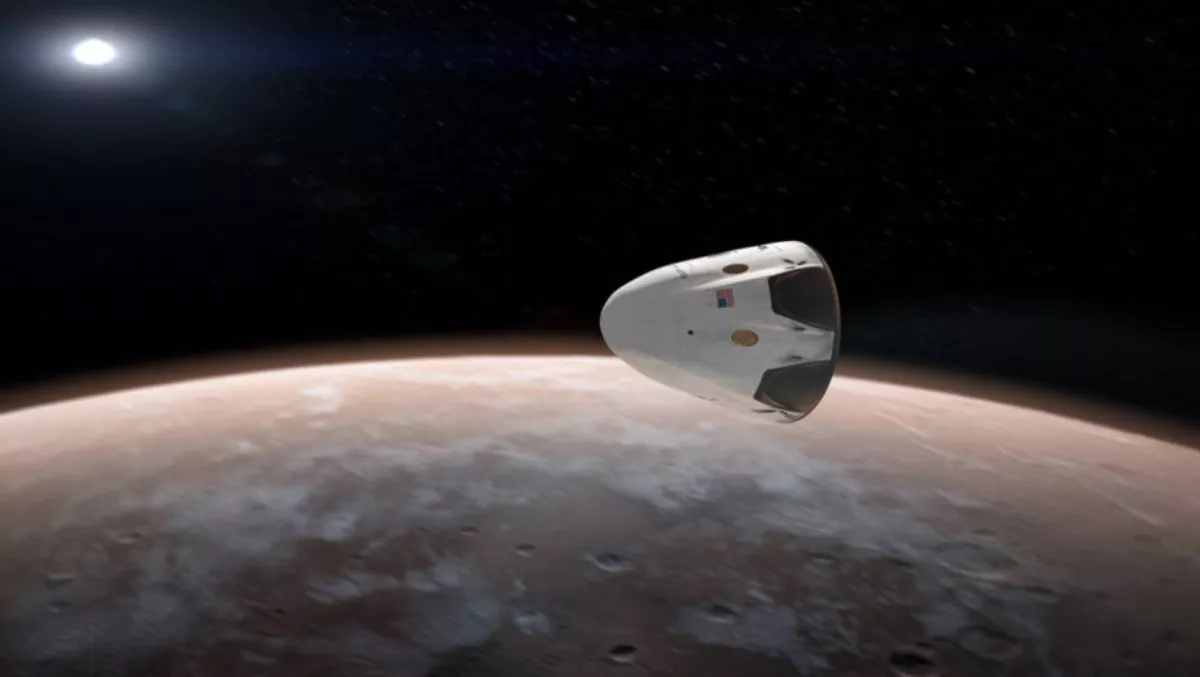
One small step toward Mars, One giant leap for supercomputing
This article was originally published on the HPE blog here.
Since the days of the Space Race between the U.S. and the former Soviet Union, we have continually sought ways to perform experiments in space.
What we've lacked is a method for performing compute-intensive experiments in orbit without aid from the ground below, which is necessary in order to advance space exploration.
All that will change with the Spaceborne Computer experiment, a self-contained HPE supercomputer housed in a locker-like casing to be installed on the International Space Station (ISS) for a full year, roughly the same amount of time it will take humans to voyage to Mars.
We recently chatted with Eng Lim Goh, HPE chief technology officer SGI, about the Spaceborne Computer, the challenges of supercomputing in space, and why this project represents an important step forward in the quest to set foot on Mars.
Tell me about the Spaceborne Computer? How did it get a ride on a SpaceX rocket to the International Space Station?Customising computers for space is a long process, these computers are multiple generations old by launch time, let alone after subsequent years of operational use. Meanwhile, I was working on the concept of giving Earth-based computers self-care intelligence so the company had started the patenting process for this. I then submitted a paper to NASA to conduct an orbital experiment of this concept.
Through the dedication of our teams led by Dave Petersen and Dr Mark Fernandez, we have the Spaceborne Computer today. Our goal is to achieve a functional super-computer for spaceflight without spending years hardening systems by using off-the-shelf servers and custom-built software instead. We've had the honour of working closely with NASA for three decades, and it's an added honour for us to partner on a project of this magnitude.
Why do we need a supercomputer in space?We have always approached space exploration in steps. This launch represents the first step into the next frontier of space exploration, a mission to Mars.
Mars astronauts won't have near-instant access to high-performance computing like those in low-earth orbit do. On average, the red planet is 26 light minutes round-trip away. Imagine waiting that long to get critical answers during a system failure, that simply isn't an option. Having a supercomputer on board the spacecraft will allow our interplanetary explorers to meet some of these challenges in real time.
I like to think of the Spaceborne Computer project as the Mercury stage of the computer science research that will drive the mission to Mars. Earlier this year, my colleague, Kirk Bresniker discussed the computational challenges of the Mission to Mars and the need for a major architectural upgrade before we can realistically complete the journey, and Hewlett Packard Enterprise has the answer in Memory-Driven Computing.
Memory-Driven Computing will help us efficiently and effectively tackle the big data challenges of our day, and make it possible for us to send humans to Mars. But, even if we expect Memory-Driven Computing to become the standard for supercomputing in space we need to start somewhere.
Even the world's fastest supercomputers are due for upgrades from time to time. How will you upgrade the Spaceborne Computer if it's to be permanently based on the ISS?The Spaceborne Computer is housed in an HPE-designed and NASA-approved locker that's entirely self-contained and attached with NASA-approved bolts. Other than that, we include standard Ethernet cables, standard 110 volt AC connectors and NASA-approved water cooling technology for keeping the system from overheating. We literally use the chill of space to pull heat out of the Spaceborne Computer! Cool, right? Just as cool is the fact that our systems are totally powered by solar cells.
And because the package is self-contained and a single part number, we can put many types of computing in it that we, astronauts or scientists need. We can send a new locker up on a future mission and take the old one back. Nowhere in that process do we ask the astronauts to adjust or tune servers or otherwise become familiar with computer science.
What are the benefits to HPE and its customers?The value of this project is two-fold. First is for our Earth-based customers. From NASA's certification process we learned that HPE computers are already robust and reliable. Also, what we learn from this year-long experiment may also be applied to our product lines to benefit our customers.
Second is for our space bound customers. If this or a subsequent experiment produces successful results, they can carry with them and use the latest and most powerful off-the-shelf computers. In terms of market, it may not be that small if commercial space travel grew the same way air travel did.
This article was originally published on the HPE blog here.


